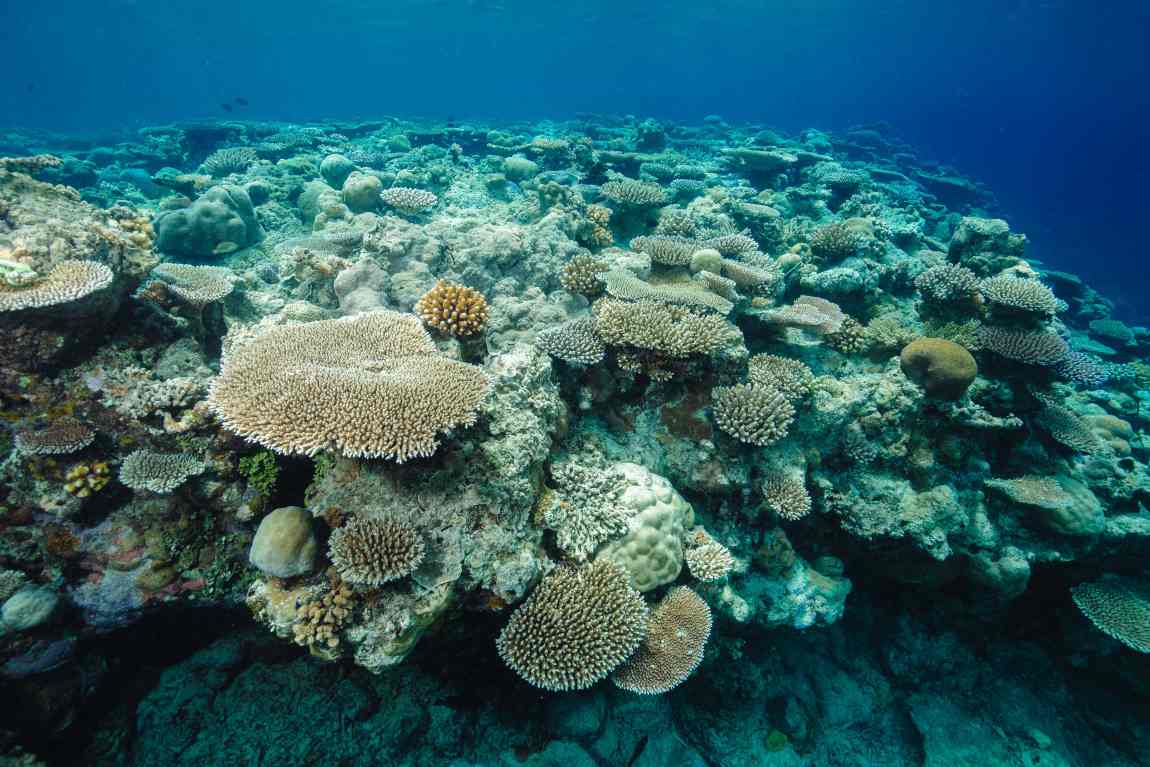Coral reproduction relies on proximity, with new research revealing that corals must be within 10 meters – and ideally closer – to fertilize successfully.
Led by The University of Queensland’s Professor Peter Mumby, the study highlights the vulnerabilities of corals in a warming world as climate change reduces their density, potentially leaving individuals too far apart to reproduce.
The findings, published in Proceedings of the National Academy of Sciences (PNAS), offer critical insights for coral restoration efforts and future conservation strategies.

University of Queensland | Australia – A new study reveals corals must be within only a few metres of each other to successfully reproduce, leaving them vulnerable in a warming world.
The international research, led by The University of Queensland’s Professor Peter Mumby, measured the success of a natural spawning event in March this year.
“In what came as a surprise, we saw that corals needed to be within 10 metres of one another, and preferably closer than that for fertilisation to take place,” Professor Mumby said.
“We knew corals couldn’t be too far apart, but we found they need to be closer than we’d expected.
“Climate change impacts like bleaching are killing and reducing the density of corals, so we’re concerned that individuals may end up too far apart to reproduce successfully.”

To quantify reproduction success, the team placed containers above 26 coral colonies on a reef in Palau, Micronesia during a time when the mostly hermaphroditic corals released eggs and sperm.
“The containers captured some of each corals’ eggs and drifted to the surface where they followed the tide,” Professor Mumby said.
“Although the eggs could not escape, sperm could enter the container and fertilise the eggs.
“After an hour of drifting, the proportion of fertilised eggs was noted for each type of coral along with the distance to similar established corals.”
Fertilisation averaged 30% when corals were very close, but it declined to less than 10% at a separation of 10 metres and was virtually zero by 20 metres.
Co-author Dr Christopher Doropoulos of the CSIRO, Australia’s national science agency, said coral reproduction was fundamental to population resilience and evolution.
“In the future we may need to help corals continue this key part of their lives,” Dr Doropoulos said.
“Understanding the importance of local neighbourhoods provides tangible targets for interventions like coral restoration.
“Ideally, the density of corals would be monitored at important locations and restoration carried out to return the density back to the levels required for successful reproduction.”
Professor Mumby has been working on efforts to repair damaged coral reefs.
“Our work over the past 5 years on the Great Barrier Reef through the Reef Restoration and Adaptation Program is also helping to define these critical thresholds to help restoration practitioners set targets for density to help maintain coral populations,” he said.

***
The study was funded by the McCusker Foundation and the Australian Government’s Reef Restoration & Adaptation Program.
Journal Reference:
P.J. Mumby, G. Sartori, E. Buccheri, C. Alessi, H. Allan, C. Doropoulos, G. Rengiil, G. Ricardo, ‘Allee effects limit coral fertilization success’, Proceedings of the National Academy of Sciences 121 (52) e2418314121 (2024). DOI: 10.1073/pnas.2418314121
Article Source:
Press Release/Material by University of Queensland
Featured image: The study site showing table corals on shallow reefs in Palau. Credit: Peter Mumby | University of Queensland




